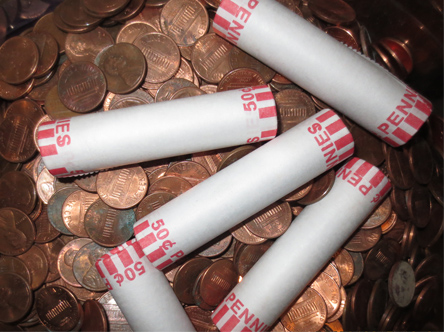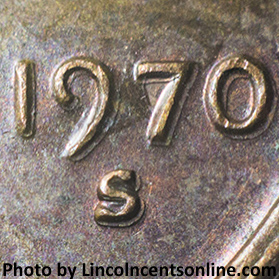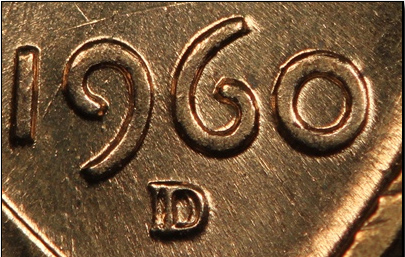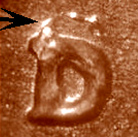
Roll Searching Tips

Many collectors, new and old, have asked about what to look for when searching for rare coins, varieties, and errors. Knowing what to look for can make all the difference in the world when it comes to finding rare coins. Learning how to distinguish mechanical doubling from a doubled die, a scratch on the coin's surface from a die crack, and damage from a true mint error will help you considerable in your searches. Knowing what makes a variety or an error will also help you to find new, previously unknown, errors and varieties.
A good place to start learning is by memorizing the keys dates of the series. For Lincoln cents, the key dates are listed on this page.
Searching common banks rolls, it is unlikely you will find a rare key date still in circulation, but anything is possible. Searching rolls of wheat cents ups the odds a little, especially if you are fortunate enough to come across some that have not previously searched. Beware of buying rolls of wheat cents through online auctions that list them as being unsearched. Most of these rolls have been searched, sorted, and gone through as many times as they have been sold. It is sad, but there are some dishonest sellers online today that will take advantage of unsuspecting collectors.
Major varieties like the 1955 doubled die obverse are something else to watch for. There are several years that had a major die variety such as the 1969-S DDO (Doubled Die Obverse), the 1972 DDO, the 1982 DDR (Doubled Die Reverse), the 1983 DDR, the 1984 DDO, the 1995 DDO, the 1997 DDO, and many others that aren't as popular but still highly sought after by collectors.
Learning to recognise a doubled die variety when you see it, is a must. Many seasoned collectors can sometimes be fooled by mechanical doubling, sometimes called strike doubling, or ejection doubling, it comes in many forms.
There are distinct differences between MD (mechanical doubling) and a true doubled die. MD is flatter, more like a shelf next to the devices, while a doubled die will be more raised and rounded like the original device.
The 1970-S, shown below, is an example of MD.

MD will usually make the raised part of the devices much narrower than the original, while a doubled die will make the devices wider.
The 1969-S, shown below, is an example of a doubled die.

Photo By Heritage Auction Galleries
There are nine different classes of doubled dies. To learn more about what these are and how they differ from each other click here
Another type of variety to look for is repunched mint marks. Up until 1990, cents had the mint marks, D or S, punched into the dies by hand. Many times, this required more than one hit, if the puch moved at all between hits, it would leave a secondary impression on the die's surface to be transferred to every coin struck with that die. The Philadelphia mint did not use a mint mark, so cents minted there had no mint mark on them.

Photo By Mark Shope
Some years have an abundance of RPMs (Repunched Mint Marks) such as 1960, with well over 100 known RPMs.
Similar to RPMs are OMMs (Over Mint Marks). OMMs occur when one mint mark is punched into a die, then that die goes to a different mint and is punched with a different mint mark. One of the more common of these years is 1944 with the D/S variety.

Photo By Richard Cooper
There are many different errors to look for as well as the varieties already mentioned. To learn more about what they are and see some examples of them, read through the error guide here.
Error/Variety Check List
Click here to view a checklist of varieties and errors.
Next Section